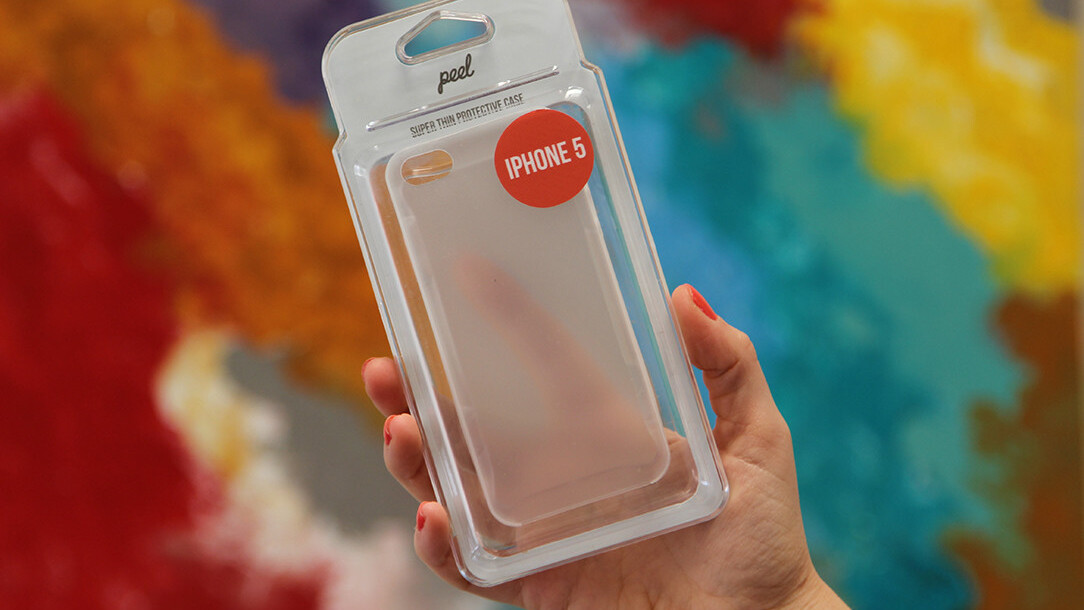
A year ago I launched Peel. It was my first foray into making and selling physical products. A year on, this is what I’ve learned and how things are going.
The story
The idea for Peel was very simple. Most iPhone cases ruin the aesthetic look of your phone. They’re also often heavily branded. I wanted a case that had a very low profile and also one that was branding free.
After a lot of back and forth with a few different factories, I managed to find one that could do what I wanted. I placed an order with them then signed up to Shopify. I had a working store in about half an hour.
I then tweeted about it and the orders started to trickle in.

This was very exciting! You can see the stripe connect tabs open in that picture. I’d literally only just finished setting up the store.
The idea of a really thin, branding free iPhone case really seemed to resonate with people and the link was re-tweeted and shared around way more than I was expecting.
I really wasn’t ready for this. We didn’t have a label printer so we had to write out each address by hand.
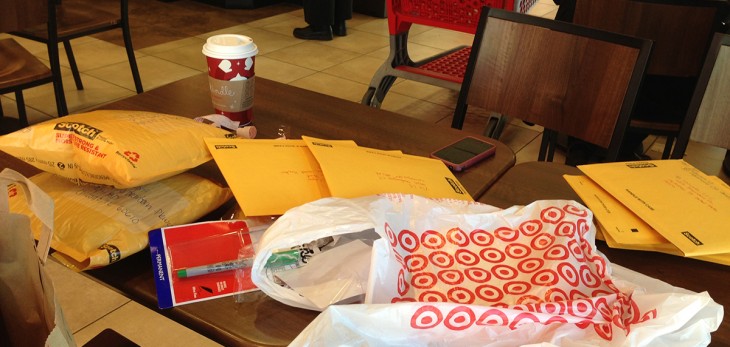
Almost instantly shipping became a huge time sink. In hindsight we should have solved this problem sooner but I always expected the number of sales to dramatically drop off after launching.
Shortly after launching, someone posted Peel to Fancy.com and it was “fancied” enough to hit the front page.
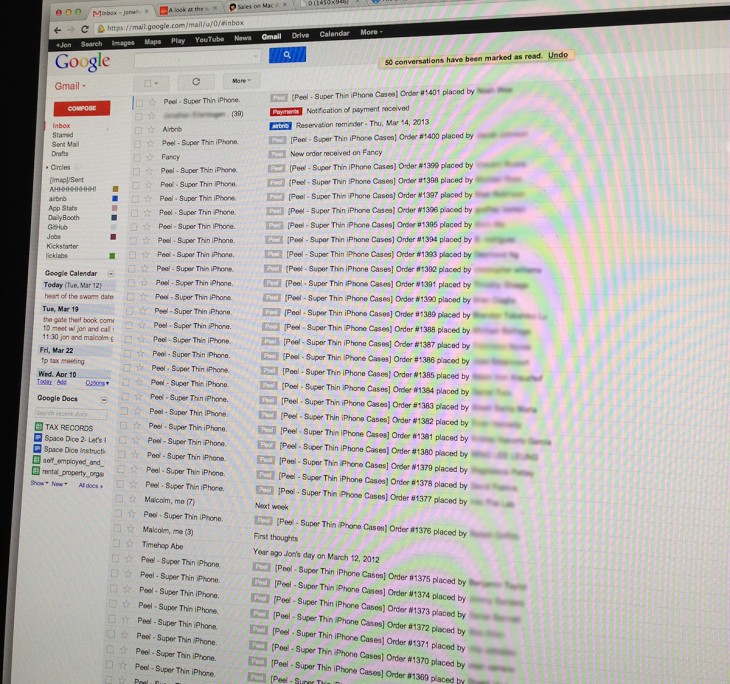
This was great exposure but shipping all these orders by hand took an entire day. My girlfriend was nice enough to offer to help me out with shipping orders but her patience was starting to wear thin.

The people in the post office also started to hate us. It got to the point where there was literally audible groans from the staff there when we arrived every morning.
We clearly needed a better solution.
We bought a $300 dedicated shipping computer with a little printer and scale. This made the shipping process 100x easier. No longer did we have to hand write each address. We could also schedule pickups so we no longer needed to load up the car and drive to the post office every day.
Around this time we added some nice looking packaging. Up until this point we were shipping out the cases loose in a shipping envelope and they’d sometimes arrive damaged. In hindsight we should have done this sooner.
The cases and packaging came from different factories so we’d still have to package everything by hand once they arrived here. Our apartment also turned into a little mini warehouse.
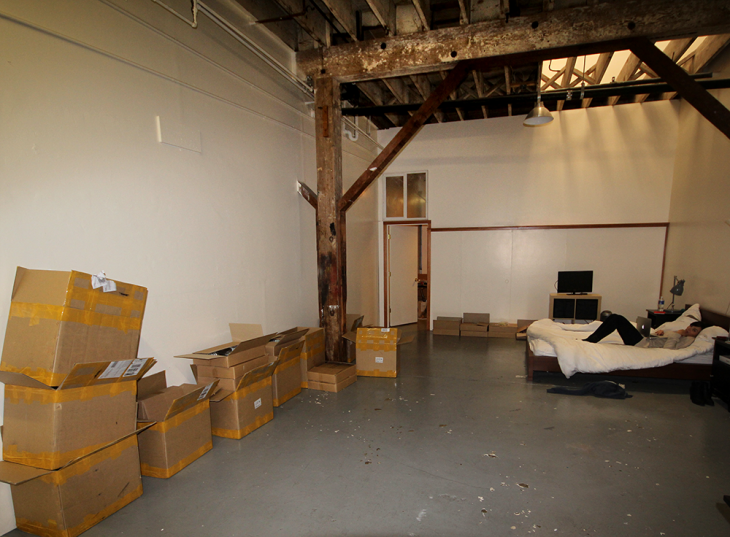
Apple events become a scary time when you have an iPhone case business. When the iPhone 5C’s were announced we put in a rush order at the factory and tried to have them up and in our store by the time they went on sale. We didn’t quite make it in time but we were pretty close.
Interestingly, one of the biggest problems we faced when launching this new product line was getting hold of each color of the 5C to take product pictures. We didn’t really want to buy 5 brand new iPhones, but it was something that was considered. Eventually we found a factory that made fake iPhones for store display purposes. They cost less than $10 each and are surprisingly high quality.
Even though we had optimized shipping a lot from when we were manually writing each address out by hand, it still took a good deal of time. Right now we’re in the process of automating this entirely by using a distribution center. It’s slightly more expensive but the amount of time it’s going to save us is going to be more than worth it. I just wish we did this sooner!
Lessons we learned
Send people free stuff
Coming from a software background it was a big surprise at how excited people get when you offer to send them free stuff. People really like getting an actual physical thing in the mail (versus a code to download an iPhone app). Most people I sent a free case to either happily blogged about it or at the very least tweeted about it. Always driving sales.
Returns aren’t worth the effort
On the rare occasion that a case arrives damaged or defective, we either send people a full refund or a replacement. Dealing with returns just isn’t worth the effort for us and it’s also a pretty horrible experience for the customer.
People are nearly always pleasantly surprised that we don’t require them to return the item before getting a replacement or refund. That makes them happy. We chalk this up as a marketing expense and move on.
Packaging makes a big difference
Having nice packaging really seems to change the perceived value of a product. We spent the first few months just sending out loose cases in envelopes which makes me cringe when I think about now. Presenting your product professionally also opens other doors to wholesalers and distributers.
“Exit intent” offers work
An “exit intent popup” is a popup with an offer displayed to people when they’re about to leave your website. A bit of javascript tracks the user’s mouse location and movement. When it moves outside the top of the browser window the script assumes that person is going to leave (either by hitting the back button or the close tab button) and quickly displays a popup with an offer.
We added this to trigger only when someone had added an item to their cart on our website, then went to leave. If this happens we offer them 10 percent off their order.
This has only been implemented for around 30 days on our website but 49 people have used the code. That’s 49 people who probably wouldn’t have purchased otherwise and an extra $1,000 in revenue. If you have a website that sells something I can’t recommend this enough.
Everything can (and probably should) be outsourced
We learned this the hard way. We’re almost at the stage now where we will never have to even see another iPhone case.
Orders will be shipped from the factory that makes the cases to the factory that makes the packaging, they will then pack and label everything and send them directly to our distribution center. We will actually be saving money this way too because before we were paying for shipping from both factories to us and then from us to the distribution center.
Numbers
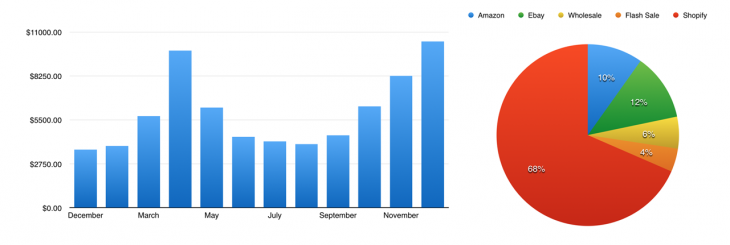
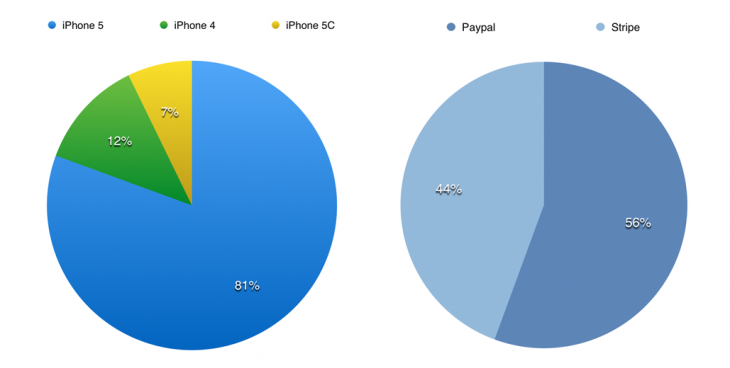
Total revenue: $71,581
Total cases sold: 4,210
What’s next?
Here’s what we’re planning for next year:
- Expand the product line. Either by supporting more phones or introducing new products for the iPhone.
- Outsource and automate as much as possible.
- Focus more on wholesale orders and try and get Peel cases into stores.
- Play around with paid advertising.
The experiment continues!
If you’re interested in trying a Peel case you can enter the code “peelstory” at checkout and get 20 percent off your order.
Get the TNW newsletter
Get the most important tech news in your inbox each week.




